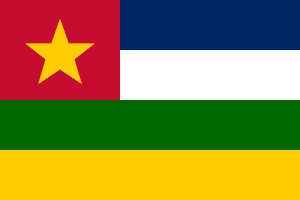Language/Pulaar/Grammar/Pronouns
Hi Pulaar learners! 😊
In this lesson, we will discuss Pulaar pronouns. Pronouns are words that replace nouns in sentences. For example, instead of saying "Fatima went to the market", we can say "She went to the market", where "she" is the pronoun that replaces the noun "Fatima". Pronouns are a crucial part of any language, and mastering them can significantly improve your language skills.
Pronouns in Pulaar are divided into different categories, including personal pronouns, possessive pronouns, interrogative pronouns, and demonstrative pronouns. We will discuss each category in detail and provide examples to help you understand them better.
Consider exploring these related pages after completing this lesson: Give Your Opinion, How to Use Have & Adjectives.
Personal Pronouns[edit | edit source]
Personal pronouns are used to refer to people, animals, or things. They change depending on the gender and number of the noun they replace. In Pulaar, personal pronouns can be divided into two categories: subject pronouns and object pronouns. Subject pronouns replace the noun that is performing the action of the verb, while object pronouns replace the object of the verb.
Here's a table of subject pronouns and object pronouns in Pulaar:
| Pulaar | Pronunciation | English |
|---|---|---|
| *mi | [mi] | I (singular) |
| *ani | [ani] | you (singular) |
| *o | [o] | he/she/it (singular) |
| *mijaabe | [miʒabe] | we (inclusive) |
| *mijeɓe | [mijeɓe] | we (exclusive) |
| *enɗi | [endi] | you (plural) |
| *wonu | [wonu] | they (plural) |
Here's an example of how to use personal pronouns in Pulaar:
- Person 1: Indi mi ndaawo? (Where am I going?)
- Person 2: Mi ndaawa e Galo. (You're going to Galo.)
As you can see, the subject pronoun "mi" is used to replace "I," while the object pronoun "e" is used to replace "you".
Possessive Pronouns[edit | edit source]
Possessive pronouns are used to indicate ownership or possession. In Pulaar, possessive pronouns are formed by adding a suffix to the end of a noun. Here's a table of possessive pronouns in Pulaar:
| Pulaar | Pronunciation | English |
|---|---|---|
| mi | [mi] | my/mine |
| giɗɗi | [ɡiɗɗi] | your(s) (singular) |
| yiɗɗi | [jiɗɗi] | his/hers/its |
| uɗɗo | [uɗɗo] | our(s) |
| wuɗɗo | [wuɗɗo] | your(s) (plural) |
| woɗɗo | [woɗɗo] | their(s) |
Here's an example of how to use possessive pronouns in Pulaar:
- Person 1: Indi mi hanndu? (Where is my book?)
- Person 2: Giɗɗi hanndu e ngol. (Your book is on the table.)
As you can see, the possessive pronoun "giɗɗi" is used to show possession of the book.
Interrogative Pronouns[edit | edit source]
Interrogative pronouns are used to ask questions. In Pulaar, there are three main interrogative pronouns: mi, mi nga, and mi haa. These pronouns are used to ask questions such as "who," "what," and "which."
Here's an example of how to use interrogative pronouns in Pulaar:
- Person 1: Mi nga nde? (What is this?)
- Person 2: Nde woni kaasal. (This is a chair.)
As you can see, the interrogative pronoun "mi nga" is used to ask what the object is.
Demonstrative Pronouns[edit | edit source]
Demonstrative pronouns are used to point to specific nouns in a sentence. In Pulaar, there are two main demonstrative pronouns: na and vaa. "Na" is used to indicate nouns that are close to the speaker, while "vaa" is used to indicate nouns that are far away from the speaker.
Here's an example of how to use demonstrative pronouns in Pulaar:
- Person 1: Nde na? (What is this?)
- Person 2: Na woni kaasal. (This is a chair.)
As you can see, the demonstrative pronoun "na" is used to indicate the chair ("kaasal") that is close to the speaker.
Now that we've discussed Pulaar pronouns, you can practice using them in your own sentences. To improve your Pulaar Grammar, you can also use the Polyglot Club website. Find native speakers and ask them any questions!
Sources[edit | edit source]
➡ If you have any questions, please ask them in the comments section below.
➡ Feel free to edit this wiki page if you think it can be improved. 😎

